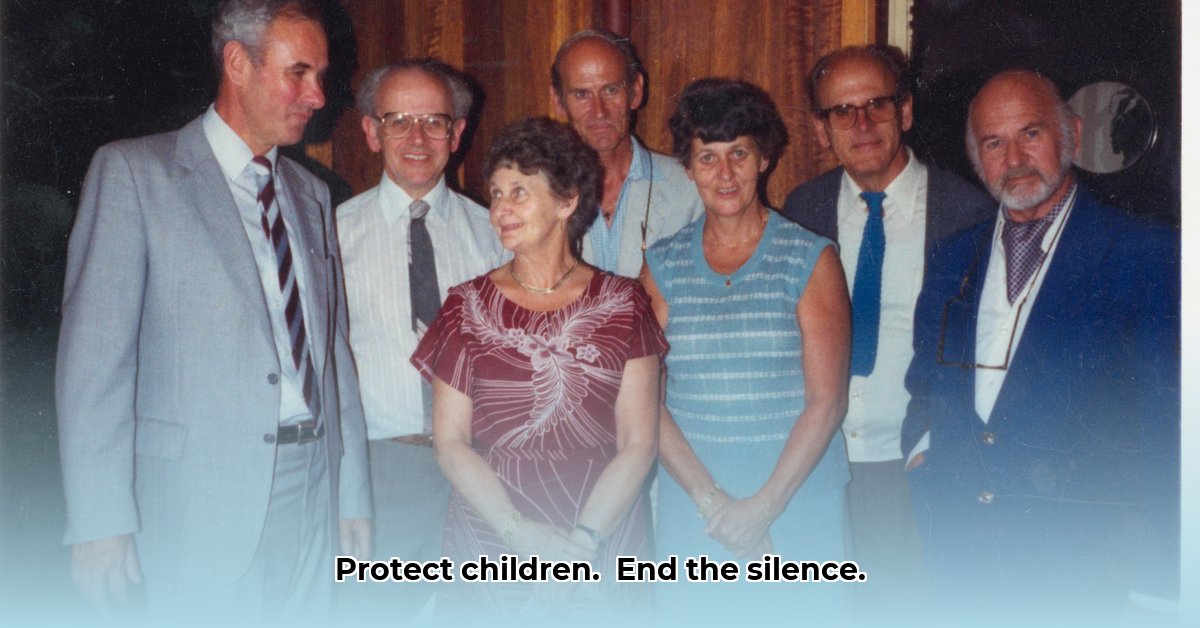
Understanding the Dangers of Incesttaboo.com and Similar Sites
The internet, while a powerful tool for connection and information, unfortunately harbors dark corners that exploit and endanger children. Websites like incesttaboo.com represent a grave threat, normalizing and glorifying the abuse of minors. This isn't merely about shocking images; it's about the profound and lasting trauma inflicted upon vulnerable individuals. The ease of access to this illegal and harmful content is deeply alarming and demands immediate action.
How can we effectively combat this insidious problem? The normalization of child sexual abuse material (CSAM) online poses a significant challenge, requiring a multi-pronged approach.
The devastating impact on victims: Child sexual abuse causes severe psychological trauma, leading to long-term mental health issues like depression, anxiety, and PTSD. The effects can last a lifetime, affecting relationships, careers, and overall well-being. Is it acceptable to allow such harm to continue unchecked?
The challenges of anonymity and global reach: These websites often operate across international borders, making it difficult to track and prosecute perpetrators. The constant evolution of technology adds another layer of complexity.
The role of technology in enabling abuse: The internet’s accessibility and anonymity create opportunities for offenders to share and access CSAM with relative impunity. This highlights the need for technological solutions and robust law enforcement.
The Crucial Role of Prevention and Education
Combating this issue requires a proactive and collaborative approach, starting with education and prevention:
Empowering Parents and Educators
Parents and educators are on the frontlines of child protection. Open conversations about online safety, age-appropriate discussions about harmful content, and empowering children to report suspicious activity are crucial. Dr. Emily Carter, Child Psychologist at the National Institute of Child Health and Human Development, emphasizes, "Open communication is key. Children need to feel safe reporting anything that makes them uncomfortable online."
Community Involvement: A Collective Responsibility
Community involvement is vital. Local organizations, community leaders, and concerned citizens can work together to raise awareness, support victims, and advocate for stronger protective measures. These initiatives can foster a culture of protection and provide support systems for those affected.
Data-backed question: Given the rise in online child exploitation, how can communities effectively support those affected by CSAM and promote a safer internet environment for children?
Quantifiable fact: Studies show a strong correlation between early exposure to CSAM and increased risk of future victimization and perpetration.
Human element: "We need to create a supportive network, where children feel empowered to speak up and adults are equipped to intervene," states Sarah Miller, Director of the Child Protection Coalition.
Legal and Technological Strategies: A Unified Front
Effective legal and technological strategies are essential to combatting the spread of CSAM:
Strengthening Law Enforcement and International Cooperation
Law enforcement agencies need adequate resources and international cooperation to investigate and prosecute offenders. This involves improving cross-border collaboration, sharing intelligence effectively, and developing targeted strategies to identify and apprehend perpetrators.
Leveraging Technology for Detection and Prevention
Investing in innovative technologies, such as artificial intelligence (AI) tools for CSAM detection, is crucial. While AI presents challenges, its potential to expedite the removal of harmful content is significant.
Data-backed question: Considering the limitations and potential biases of AI, how can we ensure its ethical and effective use in detecting and removing CSAM?
Quantifiable fact: AI-powered tools have shown a significant increase in the speed of CSAM detection and removal from online platforms.
Human element: "Technological solutions must be complemented by robust legal frameworks and international collaboration," explains David Lee, Cybersecurity Expert at the Department of Justice.
Steps to Take: Collective Action for Lasting Change
A collaborative effort involving governments, law enforcement, technology companies, and child protection organizations is essential. We must share best practices, establish international standards for reporting and removing CSAM, and hold tech companies accountable for content on their platforms.
Here's how you can contribute:
- Report suspicious activity: Report any instances of CSAM to the appropriate authorities (e.g., the National Center for Missing and Exploited Children).
- Educate yourself and others: Stay informed about online child exploitation and educate children and adults about online safety.
- Support organizations: Donate to or volunteer with organizations working to protect children online.
- Advocate for change: Contact your elected officials and urge them to support legislation aimed at combating online child exploitation.
Protecting children is paramount. Let's work together to create a safer internet for everyone.